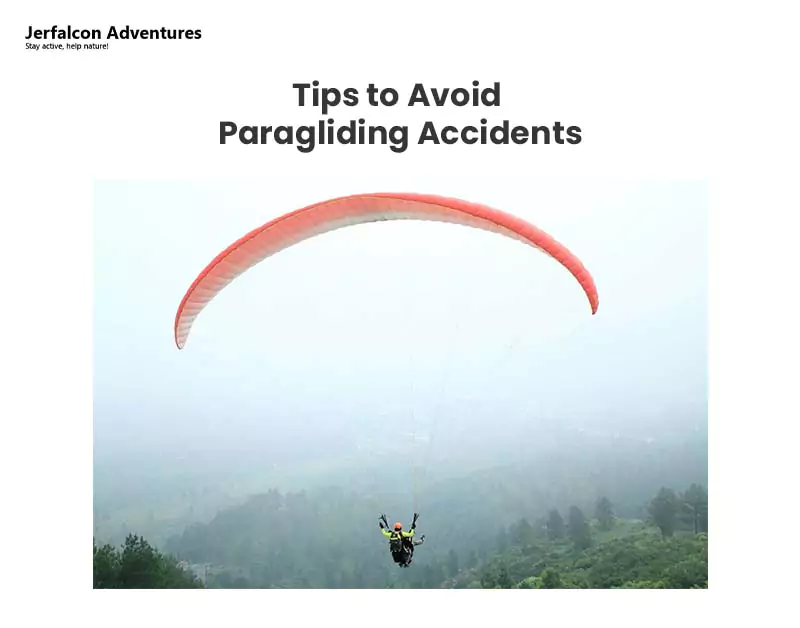Paragliding, with its promise of soaring through the skies and feeling a rush of freedom, has enticed many thrill-seekers. Yet, as liberating as it may be, the sport demands respect, awareness, and a dedication to safety. Whether you’re a newbie looking to spread your wings or an experienced flier keen on refining your skills, avoiding common paragliding mistakes is paramount.
Dive into our comprehensive guide to avoid common paragliding mistakes to make the journey safer. After all, a successful paragliding experience is not just about flying high but also about landing safely back on solid ground.
Tips to Avoid Paragliding Accidents
Paragliding offers a thrilling experience of flying and seeing the world uniquely. But with this excitement comes responsibility and a question: “Is paragliding safe.” Right? Knowing and avoiding common risks is vital to ensure a safe and enjoyable flight. The following are simple, straightforward tips to prevent speed flying or paragliding accidents and ensure every adventure ends positively.
Lack of Proper Training and Preparation
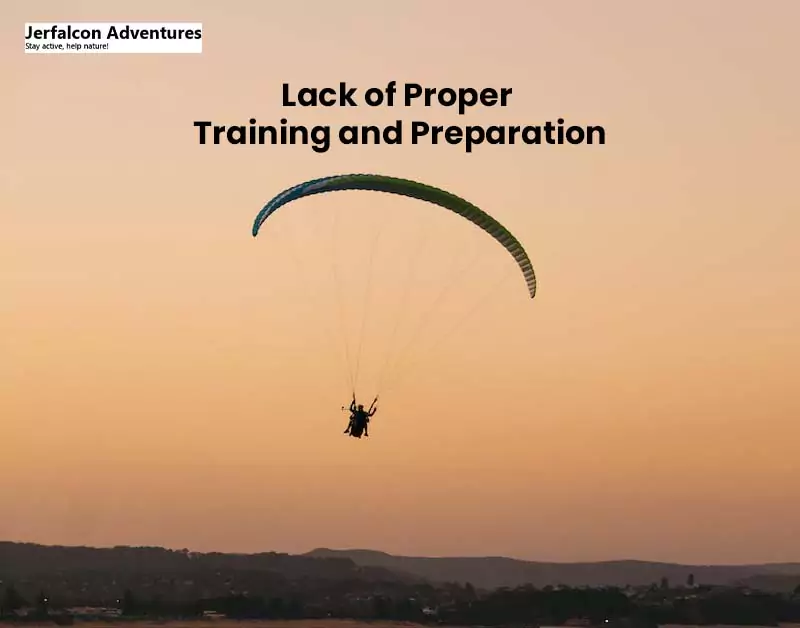
Flying without sufficient paragliding training is a recipe for disaster. Proper training will teach an individual the fundamentals of takeoff, airborne navigation, and landing safely. It provides insight into weather patterns, wind dynamics, and potential risks in addition to procedures.
Bypassing this fundamental stage raises the likelihood of an accident and transforms a thrilling experience into a challenging endeavor. Neglecting appropriate preparation endangers both the newbie and those around them. Simply put, rigorous training is the first step toward safe paragliding.
Not Investing in Continuous Learning

Paragliding is a changing sport; what you learned a few years ago may no longer be applicable today. The environment, technology, and procedures are constantly changing. As a result, it is critical to engage in continuous learning. Keeping up with the most recent paragliding training, which includes safety requirements, completing refresher courses, and attending workshops can all help to improve your flying experience.
Relying only on existing knowledge can lead to arrogance and vulnerability to new difficulties. Investing in continuous education ensures that a paraglider can adapt to, be aware of, and remain prepared for the sport’s ever-changing conditions. You may check Jerfalcon Adventures for professional paragliding training.
Poor Equipment Management
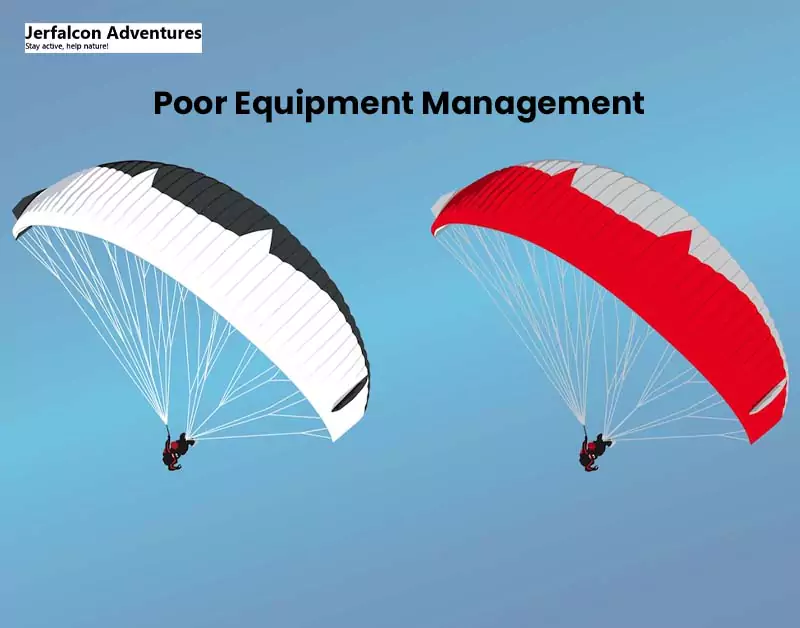
When paragliding, your equipment is your lifeline. It can cause paragliding death. Refrain from maintaining and caring for your property might have significant implications. Every component, from the harness to the wing, should be inspected for wear regularly. Flight safety is jeopardized when faulty equipment is used, or worn-out parts are not replaced.
Furthermore, incorrect storage might reduce the life of the devices and make them more prone to failure. Regular inspections, rapid repairs, and a grasp of each unit’s functionality are required. Remember that your paragliding safety is only as good as your equipment. When you are at your peak, good management ensures dependability.
Crash Landing
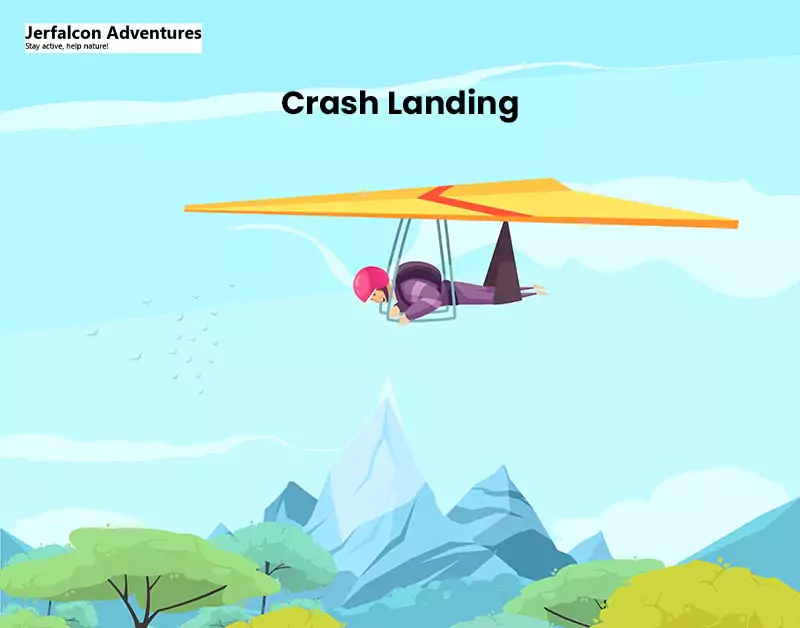
The dreaded forced landing with a paraglider crash is one of the most stressful events. Misjudgments, rapid weather changes, or misjudgment of the terrain are common causes of paragliding crashes. Landings must always be approached with caution, vigilance, and preparedness.
Analyzing the landing zone ahead of time, being aware of potential obstructions, and changing your approach to the wind direction can all help. Remember that a controlled descent, even if imperfect, is always preferable to a crash. Stay calm, trust your training, and apply the strategies you’ve learned to manage unexpected landing obstacles.
Failed Launch!

It is one of the common paragliding accidents encountered. A failed start is not just inconvenient; it can also be dangerous. Failed launches can occur due to misinterpreting wind conditions, hastening the operation, or needing a clean, unobstructed path. You could injure yourself or damage your equipment if your launch does not go as planned.
Practicing launches in various conditions, receiving guidance from experienced pilots, and doing a comprehensive check of equipment before launch can all help significantly reduce hazards. When the conditions aren’t ideal, or something doesn’t feel right, postponing the flight is always preferable to risk a disastrous launch.
Collapsed Wing!

The collapse of a paraglider’s wings in mid-flight is a terrifying event for any pilot. Such collapses can occur due to turbulent air, flying in too-powerful conditions, or failing to respond to changes in wind direction. Although modern paragliders are built to recover swiftly from a crash, pilot reaction time is essential.
A pilot can build abilities to handle such unforeseen situations by routinely practicing active flight tactics, understanding the limitations of their equipment, and enrolling in crash recovery training. Always remember that the keys to dealing with a collapsed wing are awareness, training, and a prompt response.
Neglecting Physical and Mental Conditioning

Paragliding tests physical endurance, mental toughness, gear, and technique. Physical inactivity can result in weariness, slower reaction times, and poor in-flight decision-making. Simultaneously, mental unpreparedness in stressful situations might contribute to increased panic.
Regular aerobic, strength training and mindfulness activities help enhance endurance, muscular control, and stress management. A fit physique and a calm mind can significantly increase your paragliding experience and safety.
Keep things simple

Getting caught up in the excitement of sophisticated maneuvers and advanced equipment is accessible. Overcomplicating things, especially in the early stages of learning, can lead to unneeded hazards.
A straightforward strategy centered on mastering the principles, comprehending the equipment, and accounting for the learning curve establishes a solid foundation. Simplification does not imply standing still; instead, it means moving forward at a rate consistent with skill and experience, ensuring that each flight is safe and pleasant.
Not Seeking Professional Guidance
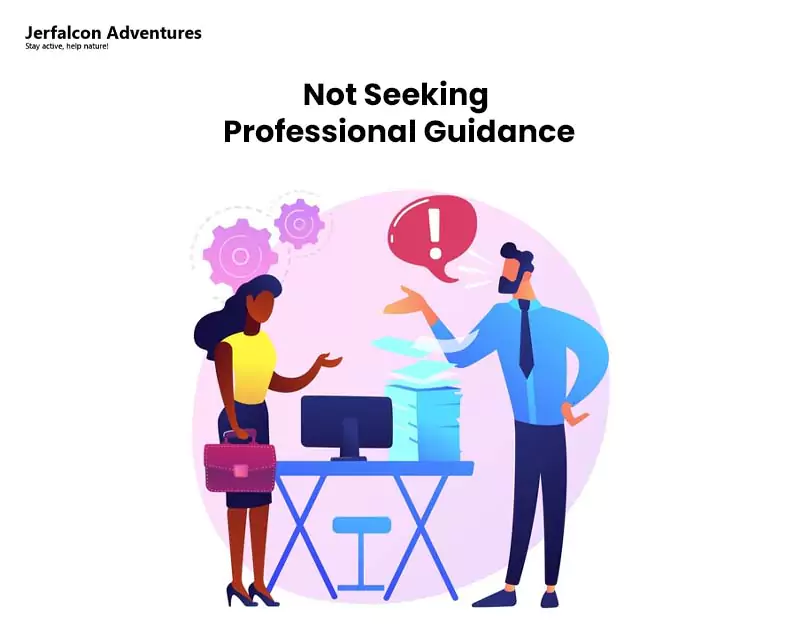
While self-learning offers many benefits, paragliding is not one of them. Getting into the air without experienced assistance might be perilous. Professional speakers bring essential experience and insights that books and videos cannot supply.
They can swiftly remove harmful behaviors or misunderstandings by providing real-time feedback and targeted assistance. Whether you are a novice or a seasoned pilot, obtaining professional service will keep you informed and secure in the air.
Practice makes perfect

This is especially true when it comes to paragliding. Regular practice sharpens abilities, boosts confidence, and fosters a deep understanding of the equipment and environment. However, it is not only a matter of number but also quality. Consistent, intentional practice in various settings and reflective learning on each flight speed up skill growth.
It’s vital to remember that every flight, no matter how difficult, teaches us something. Inexperienced pilots become seasoned specialists through a continuous learning mindset and frequent training, making the sky a place for adventure and championships.
Avoiding Common Paragliding Mistakes FAQs
What is the most common injury in paragliding?
The lower extremities, particularly the ankles and legs, are the most commonly injured while paragliding. These injuries are frequently caused by landing errors, which occur when pilots misjudge their descent or face stormy conditions. Spinal injuries can also occur when a pilot makes a hard landing without adequately absorbing the shock.
Is paragliding safer than skydiving?
Skydiving and paragliding have different risk profiles. Statistics show that paragliding has more accidents than skydiving, owing to the extended exposure period during flying. Skydiving accidents are less common but can be more severe due to the high altitudes and velocity. For safety reasons, both sports necessitate rigorous training.
Can I paraglide with a fear of heights?
Yes, many people who are afraid of heights have succeeded in paragliding. Paragliding is typically described as floating rather than falling, which can differ from standing at a high altitude. However, before you begin flying, you should discuss your anxieties with a flight instructor and work to overcome them.
Can overweight people paraglide?
Yes, overweight people can paraglide, but there are weight restrictions in place to keep everyone safe. Weight limitations vary according to equipment and flight conditions. Consult a paragliding school or instructor for advice on proper equipment and safety considerations for heavier folks.
Who Cannot paraglide?
People with specific medical disorders, such as severe cardiac or pulmonary difficulties, should avoid paragliding. There may also be restrictions for children under a particular age and those who weigh more than the allowed weight of the apparatus. Consult a recognized paragliding school or a qualified instructor to determine individual suitability.
What is the probability of dying paragliding?
The danger of death while paragliding is negligible. However, the exact amount may vary depending on location, equipment, and pilot experience. There are some risks, like with other extreme sports. Paragliding dangers are considerably reduced by proper training, equipment inspection, and adherence to safety regulations.
Conclusion
Paragliding blends thrill and beauty, offering an unparalleled sky view. However, many often wonder, “How dangerous is paragliding?” The risks are real, but these dangers are significantly minimized with continuous learning, proper training, and equipment management.
Like any adventure sport, the key lies in respecting discipline and being adequately prepared. Ensuring regular equipment checks, seeking professional paraglider Training, and adhering to safety measures can transform a potentially dangerous activity into a mesmerizing and safe experience. Remember, paragliding isn’t just about the freedom of flight; it’s about ensuring every lift-off has a safe touchdown.
